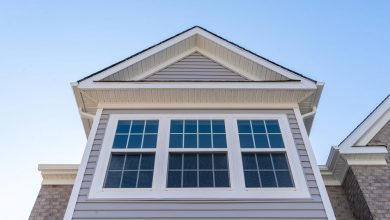Fixing Garage Door Sensors: Essential Steps for Optimal Performance

Garage door sensors play a pivotal role in ensuring the safety and functionality of automatic garage doors. These sensors prevent the door from closing if an object or person is detected in its path. However, common issues such as misalignment and malfunction can hinder the performance of your garage door, posing potential safety risks. This overview provides a comprehensive guide on diagnosing garage door sensor problems, troubleshooting steps, and understanding when it’s time to call in professionals, ensuring your garage door continues to function smoothly and safely.
Common Issues with Garage Door Sensors
Misalignment
One of the most frequent issues with garage door sensors is misalignment. Since sensors work in pairs, they need to be perfectly aligned to communicate effectively. If one sensor is knocked out of alignment, it can prevent the garage door from closing, thinking there’s an obstruction when there isn’t.
Dirt and Debris
Dirt or debris on the sensor’s lens can block the infrared beam, leading to malfunction. Regular cleaning is essential to keep sensors working correctly.
Wiring Problems
Faulty or damaged wiring can disrupt the sensor’s operation. This could be due to wear and tear over time or accidental damage during home maintenance activities.
Malfunction
Over time, sensors can wear out and may need to be replaced. Age, weather conditions, and physical damage can contribute to sensor malfunction.
Troubleshooting Steps
Check for Obstructions
The first step is to ensure there’s no actual obstruction blocking the sensors. Even small objects or accumulations of dirt can trigger the sensors.
Clean the Sensors
Gently clean the sensor lenses with a soft cloth and mild cleaner. This can remove any dirt or debris interfering with the sensor’s infrared beam.
Realign the Sensors
If the sensors appear out of alignment, carefully adjust them until the LED indicators show they are properly aligned. Most sensors will have lights that indicate when they are correctly positioned.
Inspect the Wiring
Check the wiring connecting the sensors to the garage door opener. Look for any visible signs of damage, wear, or loose connections and secure or replace wires as necessary.
Manual Override
Most garage door openers have a manual override function. Use this feature to try and operate the door while troubleshooting. This can help determine if the issue lies with the sensors or another part of the system.
When to Call in Professionals
While some sensor issues can be resolved with simple troubleshooting, certain conditions warrant professional intervention:
- Persistent Misalignment: If sensors continue to misalign despite attempts to fix them, professional recalibration may be necessary.
- Wiring Issues: Electrical problems should be handled by professionals to avoid the risk of injury or further damage.
- Sensor Replacement: If troubleshooting indicates that the sensors are faulty and need replacement, it’s best to have the work done by experienced technicians.
Professionals like those at www.safetygaragedoor.com and experts in fixing garage door sensors have the knowledge and tools to address complex issues safely and efficiently.
Conclusion
Garage door sensors are crucial for the safe operation of your garage door. By following these troubleshooting steps, you can address many common sensor issues. However, when problems persist, or you’re unsure how to proceed, enlisting the help of professional garage door repair services is a wise choice. This ensures that your garage door sensor issues are resolved correctly, restoring optimal performance and safety to your garage door system.






